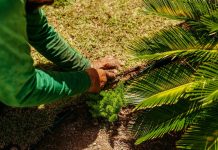
In a new study, researchers found evidence that the anti-diarrhea drug loperamide could be used to induce cell death in glioblastoma.
Glioblastoma is a very aggressive type of cancer in children and adults that shows only a poor response to chemotherapy.
The finding may boost the development of novel treatment strategies.
The research was conducted by a team at Goethe University.
In certain types of tumor cells, the use of loperamide leads to a stress response in the endoplasmic reticulum (ER), the cell organelle responsible for key steps in protein synthesis in the body.
The stress triggers its degradation, followed by the self-destruction of the cells.
This mechanism, known as autophagy-dependent cell death occurs when cells undergo hyperactivated autophagy.
Normally, autophagy regulates normal metabolic processes and breaks down and recycles the valuable parts of damaged or superfluous cell components thus ensuring the cell’s survival, for example in the case of nutrient deficiency.
In certain tumor cells, however, hyperactivation of autophagy destroys so much cell material that they are no longer capable of surviving.
In the study, the team found that autophagy could support the treatment of glioblastoma brain tumors.
They found that drug loperamide could lead to cancer cell death.
The team also showed that loperamide triggers only autophagy but not cell death in other cells.
They say that loperamide, when taken as a remedy against diarrhea, binds to particular binding sites in the intestine and is not taken up by the bowel and is therefore harmless.
The loperamide-induced death of glioblastoma cells could help in the development of new therapeutic approaches for the treatment of this severe form of cancer.
Further studies are necessary before loperamide can actually be used in the treatment of glioblastoma or other diseases.
One author of the study is Dr. Sjoerd van Wijk.
The study is published in Autophagy.
Copyright © 2020 Knowridge Science Report. All rights reserved.



